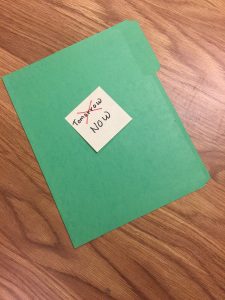When it comes to dealing with clutter, are you like Scarlett O’Hara in the film classic, Gone with the Wind, always putting off disagreeable tasks until “tomorrow?”
 Here are some strategies that can help. The example we’ll use applies them to paper clutter, but they can help you get moving on any clutter-busting project.
Here are some strategies that can help. The example we’ll use applies them to paper clutter, but they can help you get moving on any clutter-busting project.
First of all, know when you’re not procrastinating, as these first three strategies address:
- Start by asking yourself “Do I know what I should be doing?” If the answer is “No,” you’re not procrastinating — you’re becoming aware that you need more information. For example, do you need to ask your insurance agent what receipts should be saved in case of a catastrophic loss? Go get that information, and action will come easier.
- Now ask yourself, “Is this a priority right now?” Important as staying on top of your paper is, if your elderly father is in danger of tripping over the clutter in the family room, you’re not procrastinating – you’re clarifying your priorities. Decide what the most important thing to do is right now, and action will follow.
- Finally, ask yourself, “Do I have all the tools I need for the job?” In dealing with paper, these might include a file storage unit, hanging or manila folders, a good marker, and a bag for recycling. Make task #1 assembling the tools you need,
If you know deep down that you are procrastinating, these techniques can help get you unstuck:
- Write down just a few specific steps for part of the project you’re putting off, for example:
- Throw away obvious junk mail.
- Assemble all unpaid bills.
- Set up a folder for tax documents
Often, seeing something concrete will get you moving, especially if you’re a visual person.
- Talk to people about what you’re planning to do. “This is the year I get rid of my paper piles for good.” This will have three benefits:
- Listening to yourself will help you get moving, especially if you’re an auditory person.
- Those people will probably give you good ideas and/or encouragement.
- Accountability will help you move into action, if only to avoid embarrassment.
- Pick a step on your action list that involves physical movement or use of your hands. Ripping up outdated paperwork is good for this.If you are what education experts call a tactile-kinesthetic person, this will engage you, and further action is sure to follow.
- Pick any task that will take no more than five to ten minutes, no matter how trivial it may seem:labeling file folders; shredding old bills. Promise yourself that you can stop when time is up.Chances are, you won’t want to stop, because momentum will start to build.
- Take advantage of your current mood. If you feel like talking, make that phone call to your insurance agent. If you feel like writing, make your to-do list. If you feel like moving, drive to the office supplies store.
- Reward yourself for doing a task you hate to do by combining it with something fun. Listen to your favorite music while you purge old files.Or give yourself the reward when the unpleasant task is done: “As soon as I’m finished going through these old medical records, I’ll invite my friend to meet for coffee.”




